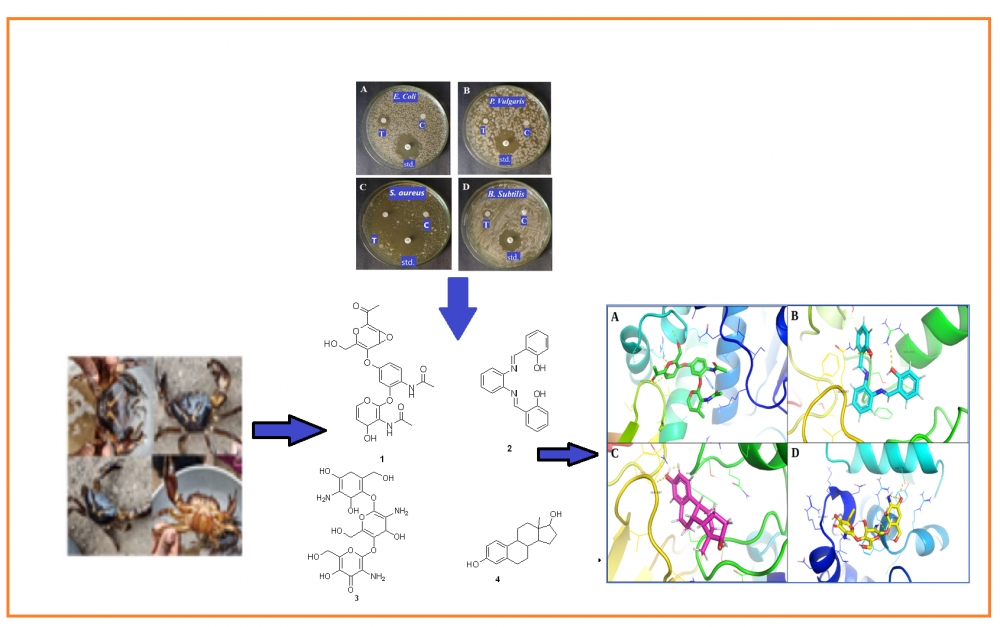JOURNAL 3223
Bioorganic and Medicinal Chemistry Reports
Available Online: September 11,2024
p.1 - 12
http://doi.org/10.25135/acg.oc.34.2405.3223 (DOI number will be activated after the manuscript has been available in an issue.)
Viewed 216 times.
GRAPHICAL ABSTRACT

ABSTRACT
For screening purposes, there has been interest in creating natural product scaffolds that closely resemble drug-like compounds utilizing combinatorial chemical approaches. Various screening techniques are being developed to improve the data mining and drug development campaigns' usage of natural materials. From the tissue extract of the freshwater crab Barytelphusa cunicularis, four chemicals were shown to have biological activity against both gram-positive and gram-negative bacteria, including E. coli and B. subtilis, and S. aureus. Four pathogens were used in this study: A. niger, M. furfur, A. flavus, and P. Chrysosporium. Flavus and P. Chrysosporium, but poorly against A. Niger and M. Furfur. To further the development of potential therapeutics, structure-activity relationship (SAR) analysis via a virtual screening protocol was conducted. Bioactivity assessments confirmed the compounds' efficacy against both bacterial and fungal targets. Molecular docking analyses revealed that all four organic compounds exhibit favorable absorption, distribution, metabolism, excretion, and toxicity (ADME/T) properties and bind with the protein DNA gyrase at diverse sites. In conclusion, the compounds' notable activity with DNA gyrase suggests their potential for drug design exploration.
KEYWORDS- Combinatorial
- Barytelphus cunicularis
- molecular docking
- ADME/T
- DNA gyrase
- bacteria, fungi